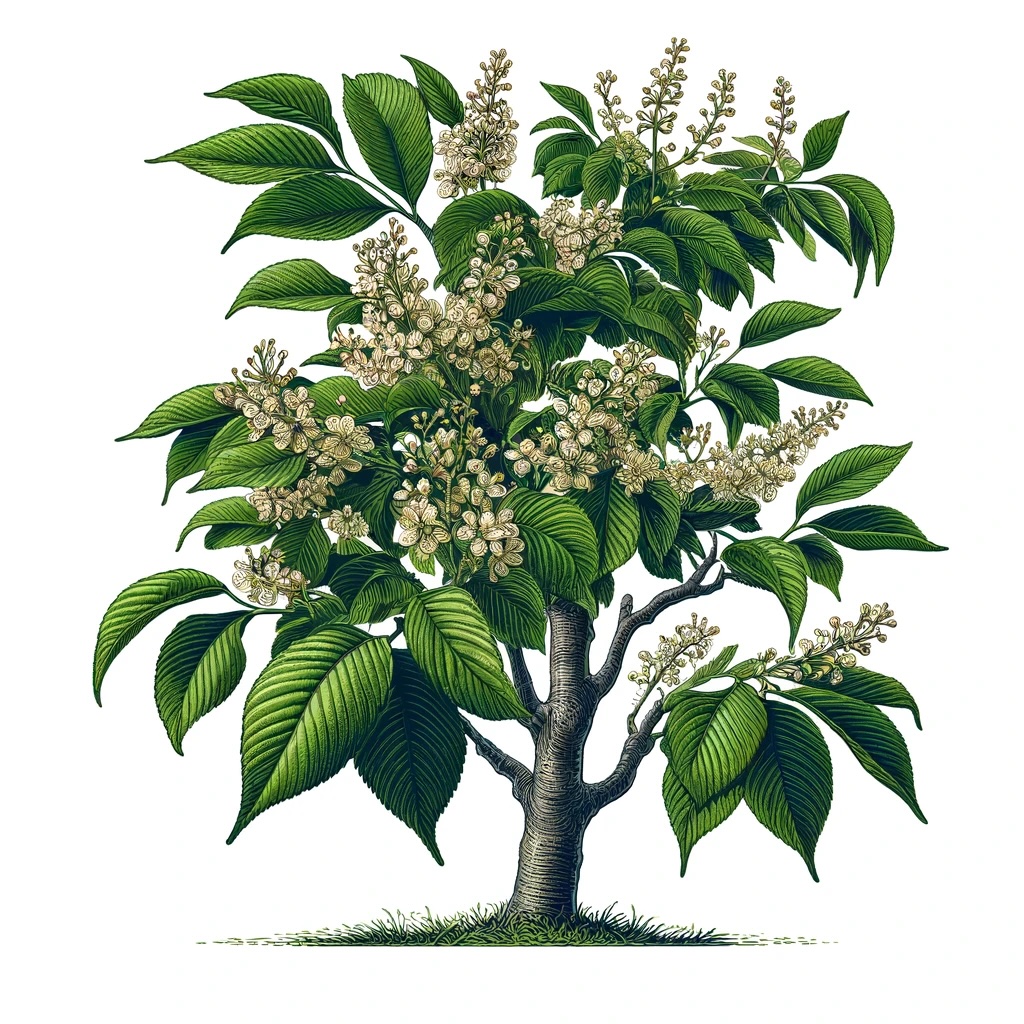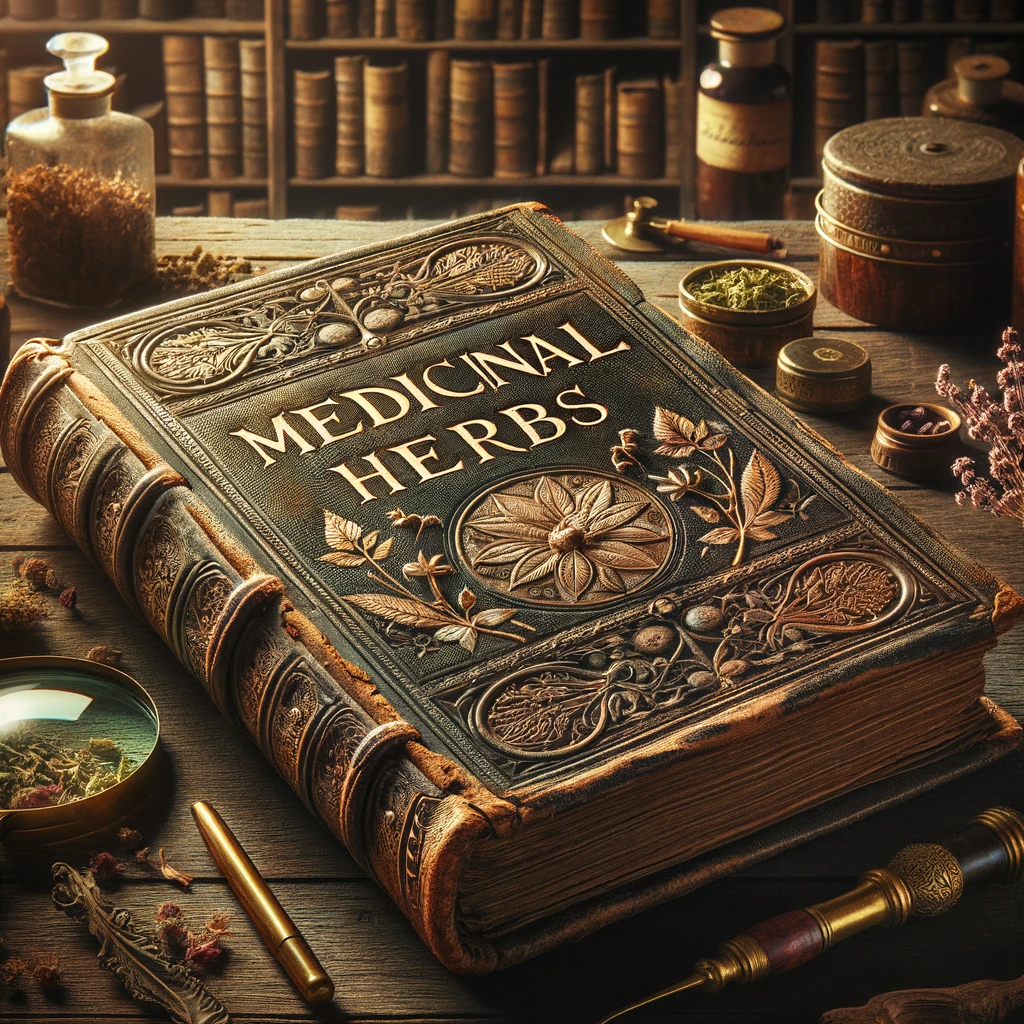This website contains affiliate links for products I use and love. If you take action (i.e. subscribe, make a purchase) after clicking a link, I may earn some tea money, which I promise to drink while creating more helpful content like this.
- Home
- Herb Index
- Wild Cherry Monograph Health Benefits
Unveiling the Wonders of Wild Cherry: A Detailed Monograph


Wild Cherry, known for its beautiful blossoms and dark, bitter fruit, is a common tree found in forests and fields. It has a long history in herbal medicine, primarily used for its soothing effect on the respiratory system.
Common Name: Wild Cherry
Latin Name: Prunus serotina
Botanical Overview
Family: Rosaceae
Identification: This tree can reach significant heights, featuring clusters of white flowers and producing dark, pea-sized cherries.
Parts Used Medicinally: Bark
Habitat: Native to North America, wild cherry trees thrive in deep, fertile soils, often found in both deciduous and mixed forests.
Herbal Actions
Primary Pharmacological Properties: Wild cherry bark boasts a diverse array of pharmacological benefits, each contributing to its efficacy in treating respiratory ailments.
1. Antitussive: Wild cherry bark acts as an antitussive agent, effectively suppressing coughing. By inhibiting the cough reflex in the brain's medullary cough center, it helps alleviate persistent coughs and spasms, providing much-needed relief from respiratory discomfort.
2. Expectorant: With expectorant properties, wild cherry bark facilitates the expulsion of mucus from the respiratory tract. It stimulates the ciliary action of the bronchial mucosa, promoting the removal of phlegm and congestion. This action helps clear the airways, making breathing easier and more comfortable.
3. Sedative: Wild cherry bark exhibits sedative effects on the respiratory system, calming irritation and reducing the intensity of cough reflexes. By soothing respiratory tissues and nerves, it helps alleviate cough-related discomfort and promotes relaxation. This sedative action is particularly beneficial for individuals experiencing coughing fits or bronchial irritation.
Energetic Qualities and Taste
Energetic Properties: Wild cherry bark exudes a cooling energy, making it particularly beneficial for addressing conditions characterized by heat and inflammation in the body. Its cooling nature helps to soothe and calm aggravated tissues, providing relief from discomfort associated with respiratory irritation and inflammation. By restoring balance and harmony to the body's energetic systems, wild cherry bark promotes a sense of calm and comfort, making it a valuable ally in supporting overall well-being.
Taste: Bitter
Medicinal Uses
Health Conditions Addressed: Wild cherry bark is highly regarded for its effectiveness in treating respiratory ailments such as chronic coughs, bronchitis, and whooping cough. Its sedative properties soothe the respiratory system, calming irritation and reducing cough reflex intensity.
How it works in the body: Wild cherry bark contains compounds such as cyanogenic glycosides and flavonoids that help relax and soothe the respiratory tract. These compounds reduce inflammation, making it easier for air to pass through the airways.
Synergies: Wild cherry works synergistically with other soothing and mucilaginous herbs like marshmallow root and licorice. Combining these herbs can enhance their respiratory benefits, providing relief from coughs, congestion, and respiratory discomfort.
Culinary Uses
Usage in Cooking: Rarely used in cooking due to its strong bitter flavor.
Flavor Profile: Predominantly bitter.
Contraindications and Precautions
Possible Side Effects: Excessive use can cause toxicity.
Interactions: Caution advised when used with other sedative medications.
Special Considerations: Not recommended during pregnancy or lactation without medical supervision.
Cultivation Tips
Growing Conditions: Prefers moist, well-drained soil and partial to full sun.
Harvesting Methods: Bark is typically harvested from young branches in the spring or fall.
Historical Use and Folklore of Wild Cherry
Traditional Uses
Wild cherry bark has been a staple in both Native American and European settler medicine for its respiratory soothing properties. It was commonly employed to treat an array of respiratory issues, from simple coughs to more severe conditions like bronchitis and even pertussis (whooping cough).
Indigenous Use
Native American tribes valued wild cherry for its broad medicinal applications, using it not only for respiratory ailments but also for gastrointestinal issues. Its widespread use across different tribes highlights its importance and effectiveness in traditional medicine.
Cultural Significance
In folk medicine, wild cherry bark has often been regarded as a symbol of life and renewal. This perception stems from the tree's vigorous growth and the rejuvenating nature of its medicinal effects, embodying hope and new beginnings in folk practices.
Folklore and Mythological Associations
Wild cherry has been intertwined with various cultural mythologies, often associated with divination and love spells. It was believed that the bark and fruit of the wild cherry could be used in rituals to attract or strengthen love, and its blossoms were used in divinatory practices, symbolizing insight and foresight. This mystical aspect adds a rich layer of cultural depth to the practical uses of wild cherry in everyday herbal medicine.
Recipes and Preparation Methods
Medicinal Preparations: Wild cherry bark syrup is a traditional remedy for soothing coughs and respiratory irritation. To prepare, simmer the cleaned and chopped bark in water for about 20 minutes, strain, add honey or another sweetener, and store in a cool, dark place.
Culinary Recipes: Not commonly used in culinary applications due to its bitterness.
The information provided on this website is for educational purposes only, and is not FDA approved. It is not to be considered health advice. Always do your own research and seek the guidance of a qualified healthcare practitioner before working with any herb. Herbal Ella is not liable for any action or inaction you take with the materials and information provided. Read here for more information.
Recent Articles
-
Wild Cherry Monograph: Wild Cherry: Nature's Respiratory Ally
May 02, 24 04:52 PM
Discover the healing potential of Wild Cherry with our comprehensive monograph. Explore its benefits and uses for respiratory health. -
DIY Herbal Remedies for Respiratory Health
May 02, 24 03:46 PM
Explore easy DIY herbal remedies for respiratory health with Herbal Ella. Learn to make teas, tinctures, and more to breathe better naturally -
Understanding the Respiratory System - Anatomy and Functions
May 02, 24 03:23 PM
Discover the respiratory system's anatomy and functions with clear visuals and simple explanations to keep you breathing healthily
* Privacy Policy * Disclaimer *









